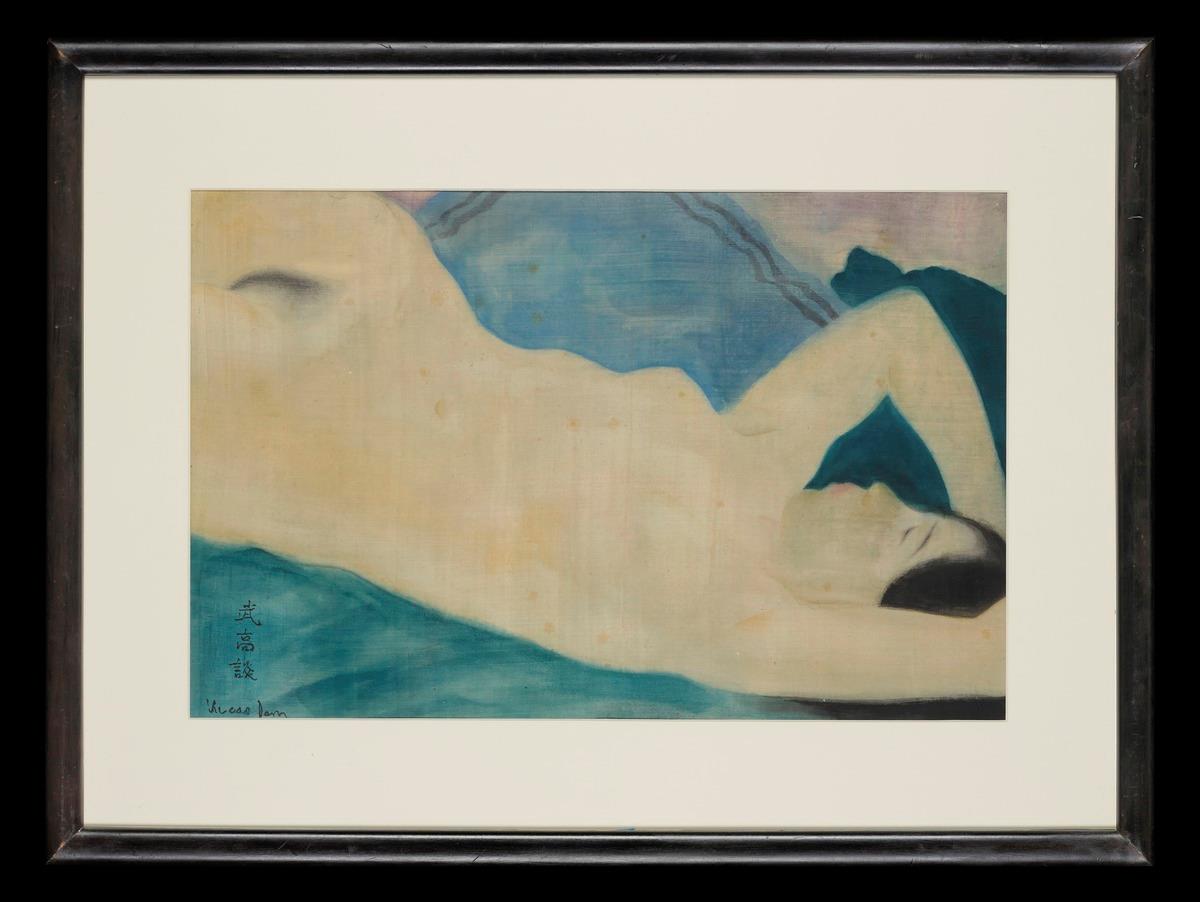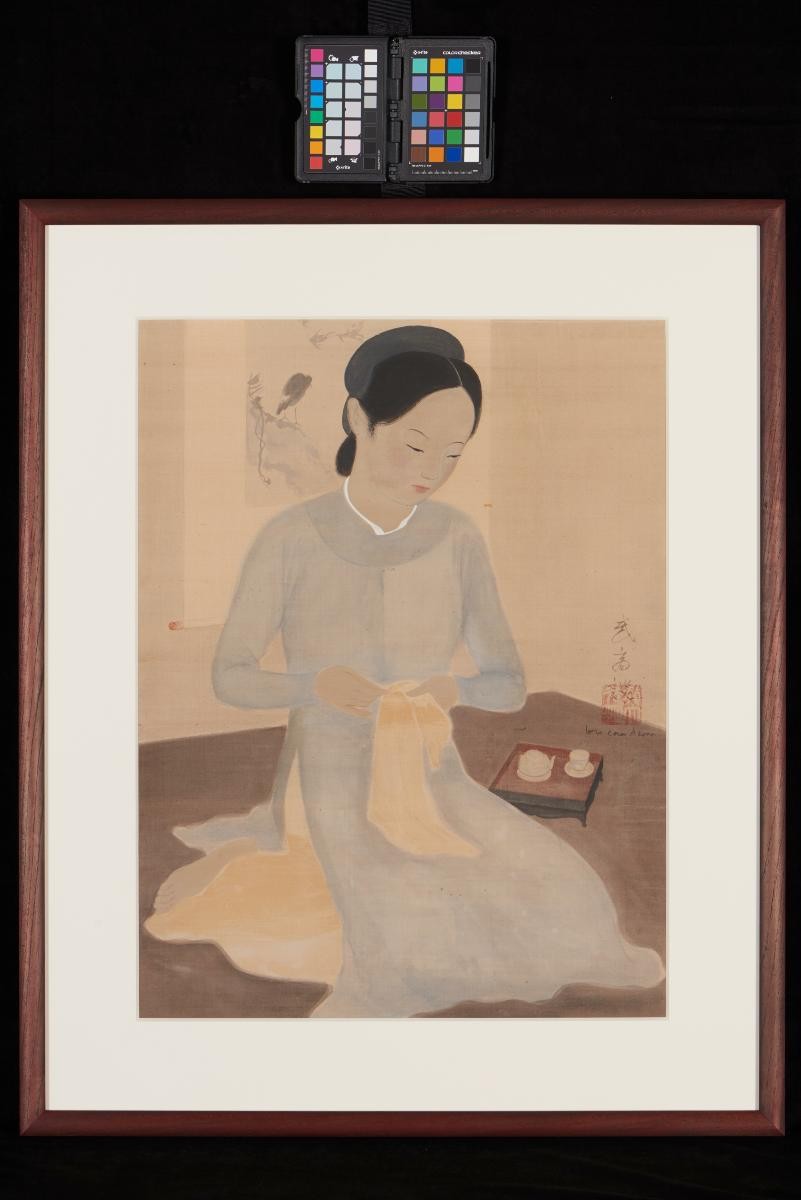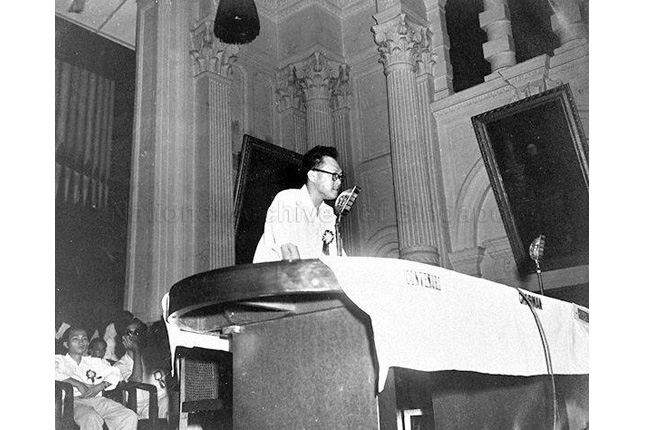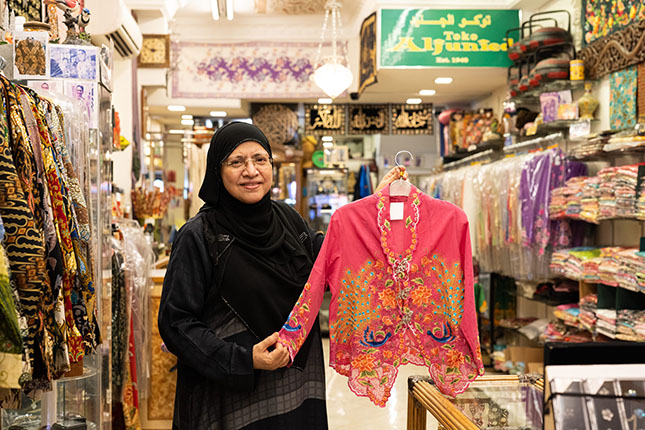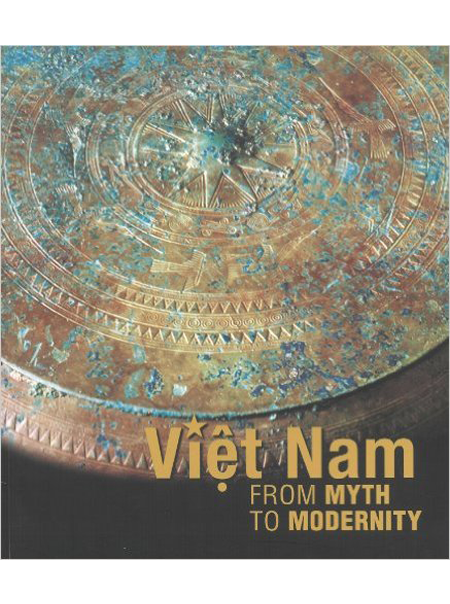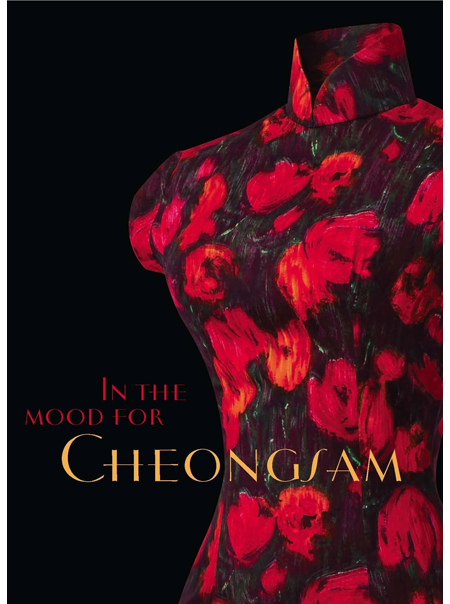Harmony in Green: The Two Sisters, Lê Phổ, Vietnam, c. 1938, gouache on silk.
Collection of National Gallery Singapore.
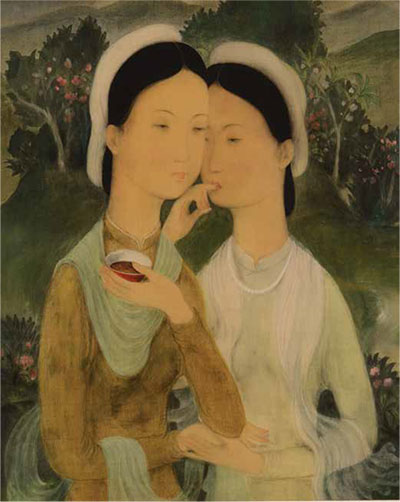
Born in Hanoi, Lê Phổ (b.1907), considered one of the masters of 20th century Vietnamese painting, was among the first batch of students who graduated from Ecole des Beaux Arts de I’Indochine in 1930. The Ecole, founded by French painter Victor Tardieu, encouraged its students to explore Western techniques of painting while experimenting with local Vietnamese materials such as silk and lacquer. In 1937, Lê Phổ moved to Paris and held his first solo exhibition there the following year. He stayed on in the city until his death in 2001.
Lê Phổ was best known for his refined and elegant portraits of Vietnamese women, often stylised in an elongated manner. This painting of two women is a prime example of Lê Phổ’s art, showing an appealing synthesis of East and West. By the end of the 1930s, Lê Phổ had travelled in both China and Europe, absorbing different cultural influences. Among the European painters he viewed, Lê Phổ preferred artists of the mediaeval and early Renaissance periods, whose delicate, linear style is reflected in the treatment of the figures in Harmony in Green. The draped scarves, which trail around the figures, may show the impact of Tang court paintings. The use of the silk material as a painting surface allowed the artist to create a soft, luminous colour harmony.
This is an extract from "The Singapore Story through 60 objects" written by Kennie Ting, Director, Asian Civilisations Museum and Peranakan Museum & Group Director of Museums, National Heritage Board. Research for this article is supported by National Gallery Singapore. This article was first published in Cultural Connections Volume IV 2019 by Culture Academy Singapore.





